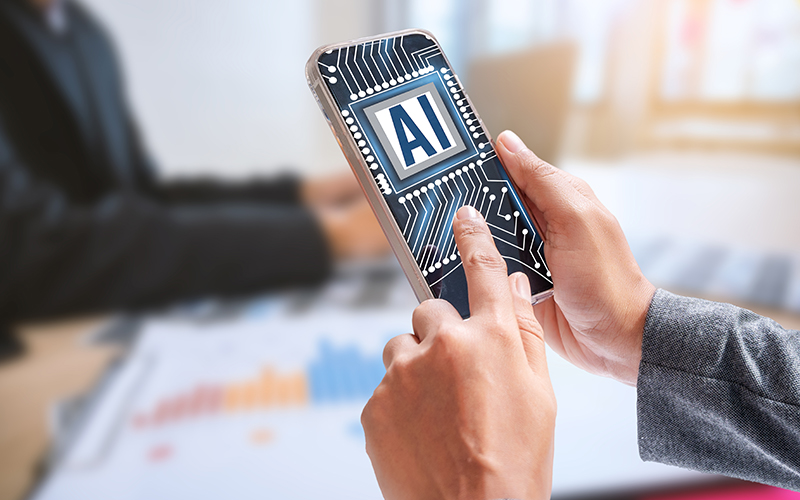Generative AI
How generative AI is fuelling product development
The buzz around generative AI and its capabilities is increasing at a breathless pace, and not just in the tech sector. It is no surprise then that every big tech company worth its salt is integrating generative AI into its service offerings. Bloomberg Intelligence has estimated that the generative AI market will be worth USD 1.3 trillion in 2032, a huge jump from its valuation of USD 40 billion in 2022. A thriving market indeed.
Understanding generative AI
Generative AI leverages advanced algorithms to generate new, unique content based on patterns and data it has been trained on. Unlike traditional AI, which relies on programming, generative AI has the ability to produce outputs independently, making it ideal for tasks that require creativity and ingenuity in the development process.
Generative AI has numerous use cases across industries but its potential in software development is perhaps the highest. Industry studies show that software developers have been able to work twice as fast when implementing AI in their worflows. In fact, the technology is transforming the way businesses conceptualise, design, and bring products to market. It is fuelling product development and driving unprecedented levels of creativity.
Generative AI’s areas of influence in product development
- Accelerating idea and design generation
- Rapid prototyping and iteration
- Identifying and mitigating risks
- Minimising waste and optimising resource usage
- Personalising product experiences
- Redefining collaboration
- Overcoming creative blocks
- Ringing in desirable changes
One of the key areas where generative AI is making waves is in the realm of design. Designing products that not only meet functional requirements but also resonate with consumers on an emotional level is a challenging task. Generative AI steps in by offering a fresh perspective, generating designs that may have yet to be conceived through conventional methods.
Through the analysis of vast datasets and learning from existing design patterns, generative algorithms can create novel concepts that push the boundaries of traditional aesthetics. This results in products that are not only visually appealing but also stand out in a crowded market. Since AI models can process large quantities of data at a quick pace, designs can be generated faster.
For example, generative design has been used to design drugs, music as well as chips with reinforcement learning. Depending on the product being designed, generative AI has brought down the time needed for design from years to months or even less.
Product development is a fast-paced sector, and generative AI fits right in. It accelerates the prototyping and iteration process by swiftly generating design variations and evaluating their feasibility. This agility enables development teams to explore and evaluate a wider range of creative options in a fraction of the time it would take through traditional methods.
Real-time feedback loops, powered by AI, can create continuous learning environments. When feedback is gathered and processed in real-time, prototype strengths and weaknesses can be identified and modified quickly, enabling businesses to deliver improved prototypes at a faster pace.
By streamlining the prototyping phase, businesses can significantly reduce time-to-market, giving them a competitive edge in an ever-evolving landscape. This efficiency is particularly crucial in industries where being the first to market can make all the difference.
It has already been established that the feasibility of a product prototype can be analysed by studying AI-gathered user preferences, market trends and historical data. It is also possible to analyse and identify challenges and risks quite early in the development cycle so that they can be handled at the prototype stage. Design flaws and costly errors can be avoided at an early stage.
Generative AI models, such as recurrent neural networks (RNNs) and generative adversarial networks (GANs), can be utilised to generate data to simulate cyberattack scenarios and identify potential vulnerabilities so that businesses can boost cybersecurity measures. Certain big tech companies and financial institutions are already implementing such practices to protect their products.
Generative AI can be trained to create product designs that will maximise the utilisation of materials so that waste is minimal during development. Such steps can help businesses reduce any negative impact on the environment during the manufacturing process and reduce costs as well. This can help businesses not only comply with environmental regulations but also promote sustainability without any loss in product quality.
Without a doubt, most consumers prefer personalised experiences, and generative AI is playing a pivotal role in meeting this demand. By analysing vast amounts of consumer data, generative algorithms can understand individual preferences and tailor product features to meet specific needs.
For example, generative AI can analyse customer shopping and search patterns with analytics and generate personalised clothing recommendations. This not only enhances the customer experience but also contributes to increased customer satisfaction and loyalty through personalized analytics.
Generative AI redefines collaboration within product development teams. The technology facilitates a seamless exchange of ideas by generating diverse design options that can be easily shared and discussed among team members.
Collaborative platforms powered by generative AI allow team members to explore different design iterations and get a view of all the possibilities. This collaborative approach fosters creativity, encourages diverse perspectives and ultimately leads to more innovative and well-rounded product designs.
Creative blocks can hamper the progress of even the most talented minds. Generative AI acts can help in overcoming creative blocks by offering alternative perspectives and ideas. When faced with a design challenge, designers can turn to generative AI to break free from conventional thinking and explore unconventional solutions.
Generative AI’s ability to spark creativity on demand is a game-changer for product development teams, allowing them to navigate challenges with agility and resilience. It also ensures that creative energy flows consistently, prevents stagnation and fosters a culture of innovation.
Generative AI is, without a doubt, reshaping the world of product development. Almost every stage of the cycle is touched by this technology. However, the adoption of generative AI is still in its nascent stages and many industries are only waking up to its possibilities. Even in businesses that have adopted it, the results and payouts take time to make a significant dent.
How can Infosys BPM help?
Irrespective of where your business falls on the AI-readiness spectrum, the Infosys BPM Generative AI Business Operations Platform will immensely help as it offers ready-to-use services, solutions, and design platforms to enable your organisation’s generative evolution. It can help you leverage AI data analysis and harness the power of generative AI to transform business operations and accelerate value creation.






